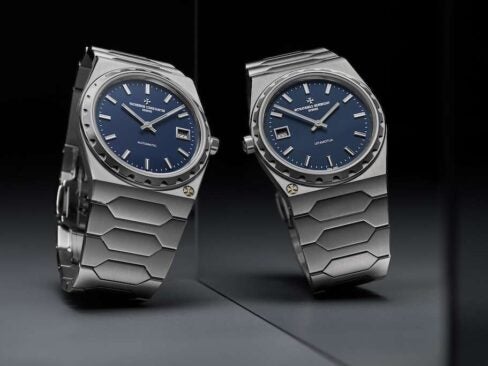
Innovation is the beating heart at the center of the watch industry. These 10 watch brands are helping to breathe new life into the market with their cutting-edge creations.
The 42.60mm DB28 T watch from Debethune has zirconium-crafted case and lugs, and it also features the fastest and lightest tourbillon on the market. Built from silicon titanium, the tourbillon (which weighs only 0.18 grams) is set into a carriage that spins on its axis every 30 seconds with 36,000 VPH (black: $205,000; black gold: $210,500).

Harry Winston’s 44mm Ocean Sport Chronograph has been crafted from zalium, a high-tech material unique to the brand and famed for not only its lightweight and nonallergenic composition but also the fact that it is corrosion resistant and harder than titanium. The skeletonized chronograph is visible through the open-work 3D dial ($27,200).

Winner of the inaugural Horological Revelation prize at Grand Prix d’Horlogerie de Genève, the 44mm Ressence Type 3 watch has wowed the industry. Its innovative fluid-filled dial features discs instead of hands that display the hours, minutes, seconds, and days as they spin and revolve under a domed sapphire crystal case ($32,000).

HYT watches use a colored liquid to indicate the time via a circular tube running along the outside of the watch case. The movement’s two bellows push and pull the liquid to show the hours and minutes. Now, the H1 Azo has arrived with a dayglow polyepoxyde resin case tinted to match the liquid. This new case material is four times lighter than titanium, more than three times as resistant to abrasions, and makes for an ultra-cool watch ($65,000).

Louis Vuitton’s new Tambour eVolution uses Black MMC, a metal matrix composite seen in the aerospace and Formula 1 racing industries, to create the case or bezel of the watch, depending on the model. The 43mm watch has a 42-hour power reserve and a rotor shaped into the LV logo (chronograph and GMT pink gold version: $43,500).
Olivier Lajouanie at Louis Vuitton in Paris
33-1-81-69-27-50
www.louisvitton.com

In 2001, Ulysse Nardin’s groundbreaking Freak used silicium in the construction of the movement. Now, with the 45mm Freak Phantom, limited to 99 pieces, the brand expands its use of silicium, using it as the hairspring and a majority of the escapement. The caliber UN-208 movement is built inhouse and an eight-day flying carrousel tourbillon makes a total revolution once every hour ($137,000).

The striking Skull timepiece by Peter Speake- Marin intrigues with the profiles of two skulls that align to evoke the shape of a heart. The design was created via an innovated chemical engraving process using circular graining, the argument being that hand-engraving would not be able to reproduce the minute details. The watch is limited to 10 pieces, five each in 38mm or 42mm cases ($18,900).

Richard Mille has introduced a new form of carbon called North Thin Ply Technology to the watch industry. This composite material, used to create sails for racing sailboats, is radically more resistant to both breaking and micro-cracking and is the case material used for the new RM 011 Carbon NTPT watch (price available upon request).

Dubey&Schaldenbrand’s intriguing Grand Shar DB Titanium Carbon Fiber uses the house’s own patented formula of oxidation and electro-plasma treatment of the titanium to give the watch a unique color and composition to the alloy. The watch also features an original in-house manufactured carbon fiber dial and a Valjoux 7750 modified movement with a three-counter chronograph ($13,700).

Fighting one of watches’ worst enemies is the new Omega Seamaster Aqua Terra 15,000 Gauss timepiece. Gauss is a unit of measurement of a magnetic field, and this watch claims to be the first of its kind to have a truly anti-magnetic movement, the Co-Axial caliber 8508, making the stainless steel 41.50mm watch especially attractive ($6,600).









